Hiking Oahu’s Knife-Edge Mountain Range

Beyond Oahu’s well-known destinations is the Ko’olau Mountain Range, remnants of the extinct shield volcano that once helped to form the island’s land mass.
Exploration of these mountains isn’t new, but it wasn’t until five years ago that the first traverse of the entire range was completed, by Chase Norton, then a PhD student at the University of Hawai’i. (The length of the traverse is unclear. Estimates range between 55 and 80 miles.) Norton spent years working out logistics, locating water sources, and attempting the route multiple times before completing it in eight days in April 2012, using a mix of mountaineering, climbing, route finding, and bushwhacking.
For about two years, Norton remained the only person to successfully complete this feat. Then, in January 2014, photographer-filmmaker Ryan Moss completed the route in five and a half days. After Moss’ successful trek, the route saw numerous attempts but fewer than a handful of completions over the next few years.
On March 4, 2017, Moss set out to beat his own speed record and succeeded spectacularly, completing the trek solo and unassisted in just four days and seven hours. Just a couple weeks after Moss’ successful traverse, Derek Potter, a Pearl Harbor–based machinist in the U.S. Navy, impressively completed the trek on his first attempt in just three and a half days.
The following images were captured over the course of the past five years as part of a project to document the Ko’olau Range.
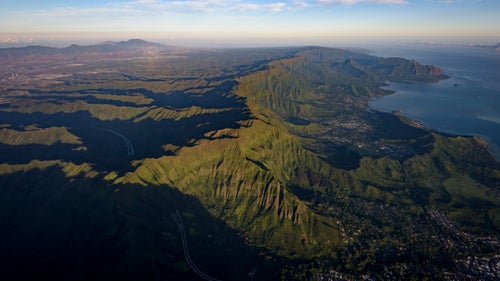
Early morning light fills the cracks of the Ko’olau Mountain Range. The conspicuous linear crest is the western rim of the extinct Ko’olau volcano and represents the route to traverse the entire range.
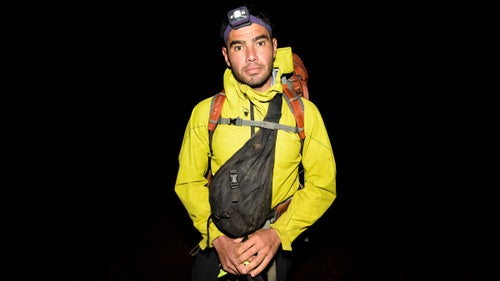
Ryan Moss poses for a portrait moments before taking the first steps of his most recent traverse of the Ko’olau Range.
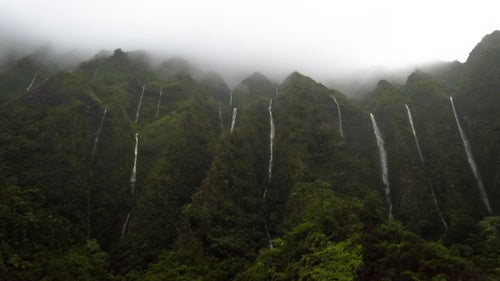
Water is the most prominent element on these mountains. It slowly erodes the volcanic rock, creating narrow ridges and unstable terrain. On days with significant precipitation, the vertical chutes on the east side of the range fill with water and create numerous waterfalls. The narrow summit ridge has no room for water to build up, making these waterfalls elusive and short-lived. The Ko’olau Range receives, on average, about 200 inches of rain per year.
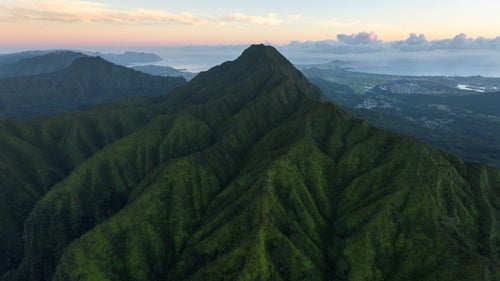
The Ko’olau Range isn’t known for towering peaks or vast, open spaces, but rather for the complexity and diversity of its terrain. Pictured here is the tallest point in the range, Pu’u Konahuanui, which stands at 3,105 feet and is commonly referred to as K1.
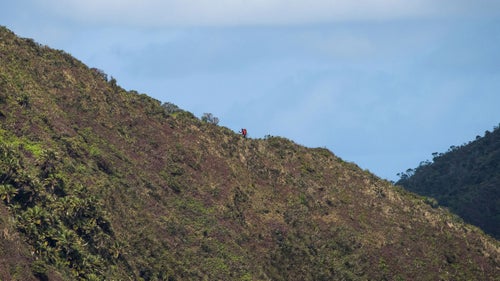
The summit ridge is a roller coaster of ups and downs through thick overgrowth. Sticks poke and prod, bushes snag your pack and clothing, and unstable rocks challenge hikers the whole way.
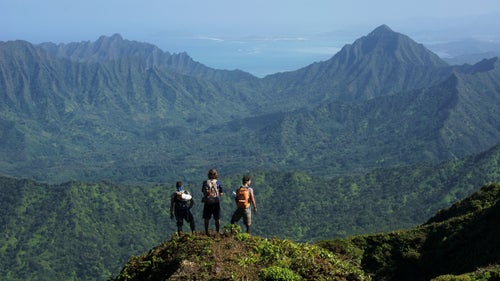
The Ko’olau Range runs north to south—essentially perpendicular to the prevailing northeasterly trade winds. These winds interact with the steep eastern slopes, causing clouds to accumulate frequently and making days this clear remarkably rare.
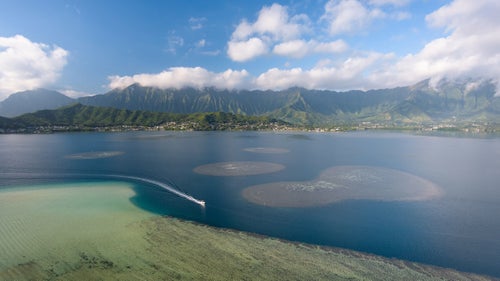
The windward coast of Oahu is world-renowned for its scenic vistas. The commanding peaks of the Ko’olau Range are the cornerstone of these famous views, dwarfing the communities that lie at their base. Pictured here, a boat motors through Kāne’ohe Bay on a calm morning inside the extinct Ko’olau volcano.
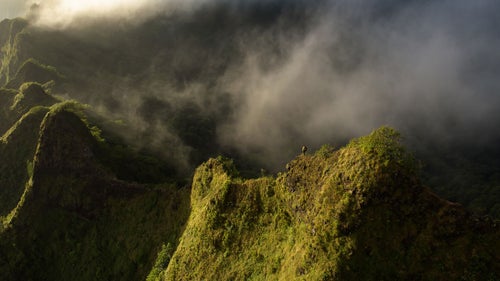
The crux of the traverse is a series of narrow ridgelines known as the Three Saddles. Each holds its own unique challenges and obstacles. For years, this section was regarded as irresponsibly dangerous terrain.
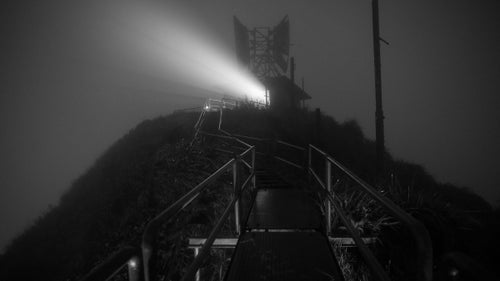
Perhaps the most frequently visited peak in the Ko’olau Range is Pu’u Keahi a Kahoe, best known as the Stairway to Heaven. The stairs were completed in 1943 to provide easy access up the steep ridge to a high-powered radio station used by the U.S. Navy.